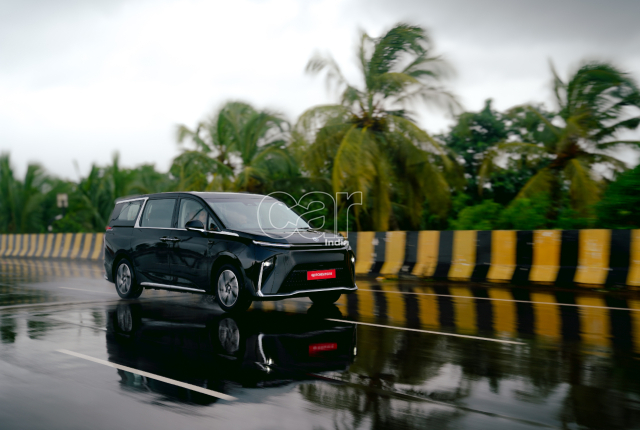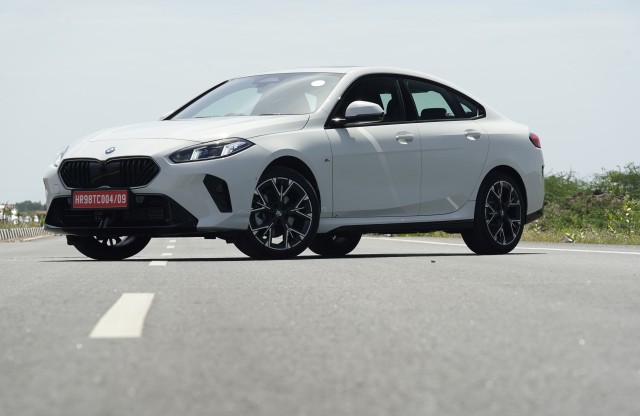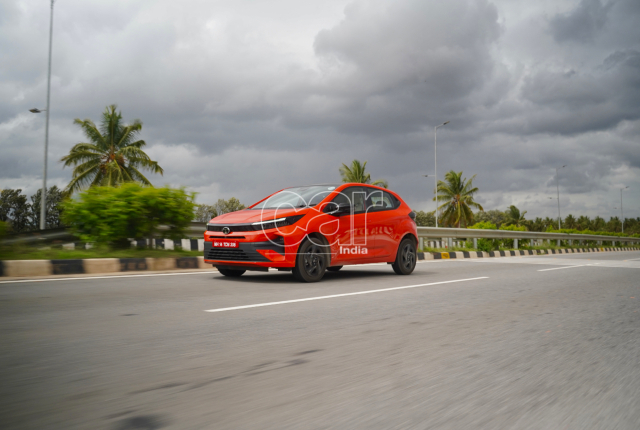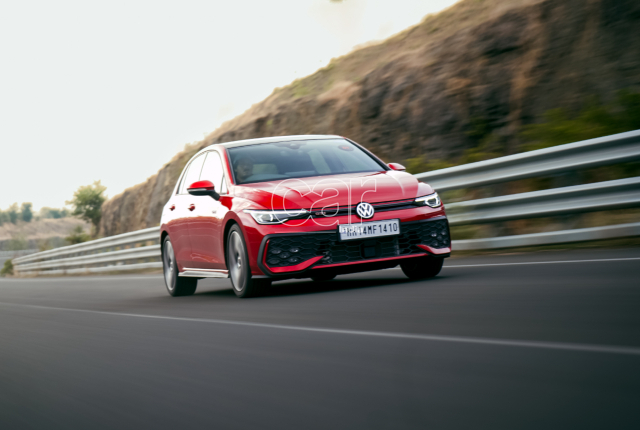 It’s once in a blue moon that someone dealing with automobiles day in and day out experiences that true frisson of excitement after a first drive.
It’s once in a blue moon that someone dealing with automobiles day in and day out experiences that true frisson of excitement after a first drive.
Aspi Bhathena experienced just that when he drove the Bugatti Veyron Grand Sport in the sylvan surroundings of French countryside and on motorways recently
Photography: Aspi Bhathena
This is it. There are
cars and there is Bugatti. Like there are Formula 1 world champions and there is Tazio Nuvolrai, an all-time legend. Not an insignificant coincidence that Tazio Nuvolari raced the Bugatti cars in the 1930s. I also had a vivid recollection that my father, who was also my mentor, always used to say that Bugatti was one of the best cars ever made in the world. 
 The Bugatti brand ceased production after World War II. When the brand was being revived, Bugatti decided to make a car nobody had attempted to make so far or would attempt in the future. For example, when Ferdinand Piech said that the Bugatti would produce 1,001 PS of power and 1,250 Nm of torque, that kind of power and torque were unheard of in a road car.
The Bugatti brand ceased production after World War II. When the brand was being revived, Bugatti decided to make a car nobody had attempted to make so far or would attempt in the future. For example, when Ferdinand Piech said that the Bugatti would produce 1,001 PS of power and 1,250 Nm of torque, that kind of power and torque were unheard of in a road car.
The Veyron Grand Sport has the horse-shoe Bugatti grille that dominates the front of the car and this sets it apart from all the other super cars. The unique rounded shape gives this car a great road presence, making heads turn wherever it goes.
The Grand Sport is probably the only car in the world in whose case the cost does not matter. They have used material such as titanium, carbon fibre, magnesium and aluminium. Each and every component is made of material with the lowest weight and the highest level of functionality. The carbon fibre monocoque is suspended from an aluminium frame at the front and a carbon fibre stainless steel one at the rear.

 The W16 engine requires extremely high precision and accuracy in machining tolerances. The two staggered banks of eight cylinders each, each cylinder having four valves (64 valves in all), are force-fed by four turbo chargers. The engine is a veritable piece of engineering marvel! This W16 is mated to a seven-gear, dual-clutch gearbox with shift times of less then 150 milliseconds. The 1,001 PS of power and 1,250 Nm of torque are put down on the road through all the four wheels.
The W16 engine requires extremely high precision and accuracy in machining tolerances. The two staggered banks of eight cylinders each, each cylinder having four valves (64 valves in all), are force-fed by four turbo chargers. The engine is a veritable piece of engineering marvel! This W16 is mated to a seven-gear, dual-clutch gearbox with shift times of less then 150 milliseconds. The 1,001 PS of power and 1,250 Nm of torque are put down on the road through all the four wheels.
A front and rear double wishbone suspension takes care of the ride and handling of the Grand Sport. The ride height in the standard mode is 125 mm front and rear, in handling mode it comes down to 80 mm front and 95 mm rear and the top speed setting drops it further down to 65 mm front and 70 mm rear.
There is a snowball effect when you increase the power to such an extent then your suspension and brakes have to keep pace with the performance of the car. The Grand Sport weighs a cool 1.8 tonnes and is capable of doing a top speed of 407 km/h. In order to harness that kind of speed, this car is equipped with huge 400-mm front and 380-mm rear carbon ceramic disc rotors with an eight-piston calliper gripping the front rotor and a six-piston calliper gripping the rear one. Thus the Grand Sport also sets a benchmark for road cars in the braking department.
The minute you slide inside the Grand Sport you can feel the quality of the interior – from the feel of the well-supported napa leather seats to all the switchgear and controls. The power indicator shows you the amount of horsepower the engine is developing at any given moment.
The engine was already running when I got behind the wheel. I did not have to make many adjustments to the driving position, for Pierre-Henri Raphanel, the pilot official, was nearly the same size as I and had just given a small demo of acceleration and braking capabilities of the Veyron. I engaged ‘Drive’ and we were cruising at 70 km/h in seven gears and the car was behaving like a luxury sedan. The ride quality was comparable to a luxury car and did not rattle our bones as most super cars tend to do.
The route was a blend of country roads and motorways. The handling of the Grand Sport is so nimble you can throw her round corners like cars half her weight. Its precise steering makes the car fun to drive as it requires very little inputs to get her round corners; she holds on to the line as if on rails.
As I hit the motorway and put the pedal to the metal, all hell was let loose. Truly, the Veyron sounds like no other car on earth. Phhhheeeeewwwwssssschhhhh. I could only hear the two aluminium intakes directly above my head sucking in the air and I felt thrust to the seat. For a moment I thought that the G force would make my innards tumble out of the tum! As the 1,001 PS and 1,250 Nm kept coming at me relentlessly, I took a quick glance at the speedo, whose needle was nudging 300 km/h. One cannot feel the up-shift of the seven-speed ‘box, the shift time being 150 milliseconds, and the mammoth power and torque give the Grand Sport seamless acceleration. Just imagine that one is motoring along at 270-280 km/h, using only 270 to 280 PS, and has another 700+ at one’s disposal.
The traffic around me was actually travelling in the same direction, but I felt as if they were going backwards. The humongous discs bring the car to a standstill within seconds and create as much G force as on acceleration.

 The beauty of the Grand Sport Veyron is that it gives you the luxury of a sedan and performance that is unheard of in a road car. I think nobody will make a car like the Veyron ever again, at least not with an internal combustion engine. Since they are going to make only a limited number of cars, I think these will all become collector’s items
The beauty of the Grand Sport Veyron is that it gives you the luxury of a sedan and performance that is unheard of in a road car. I think nobody will make a car like the Veyron ever again, at least not with an internal combustion engine. Since they are going to make only a limited number of cars, I think these will all become collector’s items
CAPTIONS:
Excitement begins as soon as one gets behind the wheel
The Veryon Grand Sport holds its line around corners like it’s on rails
The awesome power literally makes the car fly from the exit of a corner to the entry of another
BOX 1
I had the privilege of visiting the Bugatti factory in Mulshane last month and the opportunity to meet Julius Kruta, who is not just a historian, but a walking-talking encyclopaedia on the history of Bugatti and his cars. Julius showed us round and explained all the manufacturing technicalities of the Veyron. The manufacturing plant is a very small unit with only 25 engineers divided into five teams, each team building one car from scratch.
Caption- The walking-talking encyclopedia on Bugatti history- Julius Kruta, stands proudly next to the W16 engine
BOX 2
The Veyron Grand Sport has a grille made of titanium. And thereby hangs a tale. The original grille was made of aluminium. While being driven at its top speed in South Africa, the car suffered a bird hit. Such was the impact that the radiator got damaged and the car had to be transported back in a lorry. So, titanium replaced aluminium. The Bugatti monogram on the grille is made of sterling silver.





















Leave a Reply